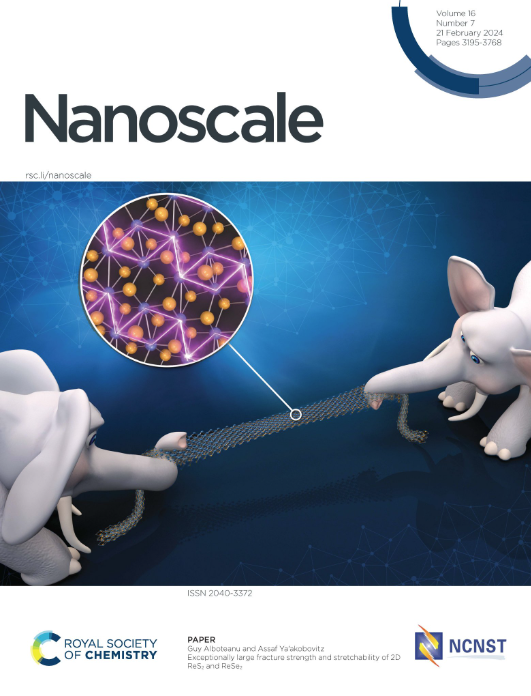Influence of Excitation Pulse Duration on the Efficiency of Upconversion Nanoparticle-Based FRET
IF 5.1
3区 材料科学
Q1 CHEMISTRY, MULTIDISCIPLINARY
引用次数: 0
Abstract
Accurate and reliable quantification of Förster Resonance Energy Transfer (FRET) is essential for the development of sensitive upconverting nanoparticle (UCNP)-based biosensors. While lifetime-based FRET measurements are generally considered robust, excitation conditions can significantly bias observed efficiencies. Here, we investigate how excitation pulse width and power influence lifetimederived FRET efficiency in core-shell β-NaYF4:Yb0.2@NaYF4:Yb0.2,Er0.02 UCNPs functionalized with Cy3 dyes. Time-resolved upconversion luminescence (UCL) measurements reveal that apparent FRET efficiencies decrease with increasing excitation pulse duration and power. These variations stem from excitation-induced changes in the UCL lifetime, arising from the complex dynamics that accompany the upconversion emission process. A dynamic rate equation model reproduces the experimental trends, confirming that excitation parameters alter emissive state kinetics and thus bias lifetime-based FRET measurements. Our findings identify excitation conditions as a hidden variable in UCNP-FRET experiments and underscore the need for standardized measurement protocols.激发脉冲持续时间对上转换纳米粒子FRET效率的影响
准确可靠的Förster共振能量传递(FRET)的定量对于开发灵敏的上转换纳米颗粒(UCNP)生物传感器至关重要。虽然基于寿命的FRET测量通常被认为是稳健的,但激励条件会显著影响观察到的效率。在这里,我们研究了激发脉冲宽度和功率如何影响用Cy3染料功能化的核壳β-NaYF4:Yb0.2@NaYF4:Yb0.2,Er0.02 UCNPs的寿命衍生FRET效率。时间分辨上转换发光(UCL)的测量结果表明,随着激发脉冲持续时间和功率的增加,FRET的表观效率降低。这些变化源于激发引起的UCL寿命的变化,这是由伴随上转换发射过程的复杂动力学引起的。动态速率方程模型再现了实验趋势,证实了激发参数改变了发射态动力学,从而改变了基于寿命的FRET测量。我们的研究结果确定了激励条件是UCNP-FRET实验中的一个隐藏变量,并强调了标准化测量方案的必要性。
本文章由计算机程序翻译,如有差异,请以英文原文为准。
求助全文
约1分钟内获得全文
求助全文
来源期刊

Nanoscale
CHEMISTRY, MULTIDISCIPLINARY-NANOSCIENCE & NANOTECHNOLOGY
CiteScore
12.10
自引率
3.00%
发文量
1628
审稿时长
1.6 months
期刊介绍:
Nanoscale is a high-impact international journal, publishing high-quality research across nanoscience and nanotechnology. Nanoscale publishes a full mix of research articles on experimental and theoretical work, including reviews, communications, and full papers.Highly interdisciplinary, this journal appeals to scientists, researchers and professionals interested in nanoscience and nanotechnology, quantum materials and quantum technology, including the areas of physics, chemistry, biology, medicine, materials, energy/environment, information technology, detection science, healthcare and drug discovery, and electronics.
 求助内容:
求助内容: 应助结果提醒方式:
应助结果提醒方式:


